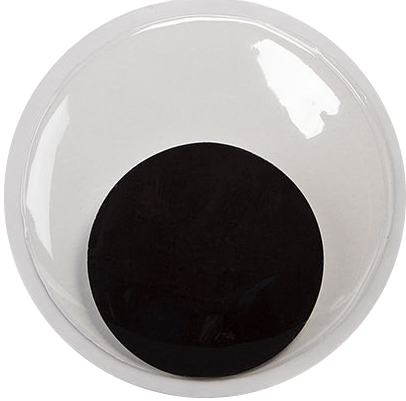If ever there was an industry that could do with some technological overhaul - its housing. 3D Printing threatens to do the job, and seems to have the right tools, but never takes off - will this be the one that does?
At $1,000 per module they offer solutions to homelessness in western countries.
3D Printing threatens to do the job
The modern housing crisis isn’t a consequence of construction labor shortages or even construction labor costs. The primary hindrance to affordable housing is proximate real estate available for development.
Unless you can find a way to print more soil or to automate the pipping and road infrastructure that connects units, these tools will mostly benefit developers in the position to speculate on real estate bought decades in advance of new municipal infrastructure.
At $1,000 per module they offer solutions to homelessness in western countries.
Where do you put the $1000 unit once you’ve built it? On a $300k lot?
I mean, where I live, there’s definitely a construction labour bottleneck.
I’m watching big chunks of my neighborhood go from one-story ranch houses on half-acre lots to three-story units on postage stamp lots. But I’m also watching the cost of this housing skyrocket, because the units are kept independent and free-standing rather than being built as connected blocks with shared insulation, electric, plumbing, and AC.
Consequently, a street that used to sell in the $100k-250k range is putting houses on the market for $600k-$800k. The issue isn’t rate of construction, its the availability of vacant real estate. The solution isn’t to maximize efficiency of land use, its to build luxury properties that can be flipped to rental companies and speculators.
Well, I don’t know where you are, but I actually know of plenty of lots for sale near me. I’m sure that’s not our issue.
The main problem is zoning laws - too much land zoned for single-family residences only, a lack of mixed-use zoning and walkability, and heavily restrictive laws on apartment buildings (height limits, floorplan requirements such as the infamous dual-stairway rule, etc ).
These laws exist because of NIMBY’s - people with an existing stake in the community who don’t want noisy transit, tall buildings being an “eyesore”, affordable housing bringing in more poor people.
The solution, of course, is to [REDACTED] all the NIMBY’s.
!yimby@lemmy.world, my brother/sister in construction freedom.
In the big city closest to me they just abolished single-family zoning. As soon as there’s tradespeople that have a single free second it’s going to be dope. Here, well, it’s a small town.
Yes, single family zoning is shit, and probably why there’s such a built-up shortage here in the first place. And definitely a big contributor to the near-total lack of transit.
Sorry I’m a Tankie I can’t see Lemmy.world
In many cities (thinking of Toledo OH) you can snag free lots.
They are zoned for single family houses only, which would cost $100k-200k to build, with a market value of maybe $50k
And nobody wants to change the zoning to allow 3d printed shanty towns.
In many cities (thinking of Toledo OH) you can snag free lots.
You can also snag a lot of cheap vacant units.
And nobody wants to change the zoning to allow 3d printed shanty towns.
Developers would love to print disposable housing that needs to be abandoned and rebuilt every 20 years or so. The trick is that they want to sell these things for a big markup. They don’t want to flip a $1000 unit at cost.
The people saying this know nothing about construction or what innovations are needed. Humans have been building housing for thousands of years and we have learned a lot over that time. Anyone asking for a technological overhaul generally doesn’t even know what we have learned and so is just going to make mistakes (sometimes deadly - there are many ways a house can kill) that someone in the industry would avoid. Generally they come up with something that costs more while being worse because they have no idea where the real problems are and so didn’t optimize it.
I mean, there’s lots of ways construction has changed already just in the last 20 years.
That is the other thing - there are already a lot of smart people thinking about it and making changes.
I feel like that contradicts what you said before, but I agree. Most ideas that sound good at first aren’t, but some actually go the distance. That applies retrospectively, and to current startups like this.
(As pictured, in the application named, I do suspect it’s the former)
Edit: Wait, this thing isn’t actually that expensive, by robot standards. Hmm.
The smart people thinking about construction know the real problems and are working on them. The people commenting here mostly don’t know what those issues are.
Where might I learn more about these issues?
Go into the industry? Market research? Lots of options but none easy
deleted by creator
From what I’ve ready, the concrete recipe is the hard part.
Yup, it needs to dry fast enough for the next layer, but not so fast it makes a clog, and it needs to flow in just the right way you can predictably extrude a layer on. And be cheap-ish.
Of course, you still have to add a lot of non-structural components, like the other user said, and if it needs to take significant loads you also need to add reinforcement somehow, since concrete is weak under tension.
You also need to add insulation and then do something to hide the ugly layer lines.
I seriously doubt 3D printed homes will ever be disruptive in any real sense. Effectively, it makes frame building easier. But that has never been the limiting factor in construction. All of the wiring, plumbing, etc is what is most difficult about building a home.
This company intends to do away with all that by just building a basic structure for people that need housing the most. Their “printer” is very cheap and fits in a shipping container. This is pretty much best case scenario, and it still would be upstaged by a shipping container of cinder blocks. The use case for 3D printed homes is luxury housing with funny shapes sold for high prices.
I used to really get exited over 3d printed buildings until coming across this argument. The most obvious thing that comes to mind afterwards to try to bring increased efficiency to house building would be structures or modules for one built in a dedicated factory to a common design, where those harder parts could be included, but prefab houses and trailer homes already do that.
Hmm. Do you have an actual number on what % frame building is?
If so, it’s mostly interesting for sky scrapers or infrastructure that have proportionately a lot more deadweight (although reinforcement is also troublesome if using concrete). I suppose it might be easier to get a robot working in a 3D printed frame, too, but that’s another non-trivial technology on top of it.
Average percentage of the building process, pg 3 so about 20% in the US, maybe more if you accept the interior finish. That being said I am highly skeptical this changes the needle, especially in the third world, because almost always if you have the land to build a shack, the cost of the shack isn’t going to keep you on the street.
Fundamentally, developers intuitively understand that building will be just about as profitable in ten years as now, but if you build to much now you will have an ‘oversupply crisis’ and the price as well as the associated profit margin will go down. Similarly, if you build a new building and are selling units very quickly, that means you’re below market price and should raise the price until they just barely sell, because that price jump will more than cover the cost of that apartment being empty for a few months or even years.
This all applies wether you’re in a shanty town in Brazil or in downtown Vancouver, and since even if you snapped your fingers and the cost to build in that shantytown halved it wouldn’t really change, I am really skeptical that even a highly transformative technology could change things, much less an expensive replacement for a few pallets of cinder blocks, a few friends, some drinks, and a weekend.
What you need is something like plentiful public housing providing a minimum quality of house at cost that the market must do better than, but groups like the IMF tend to despise countries doing things like that, because it’s a highly profitable investment when private foreigners do it but a reckless waste of money if the government tries to do the same thing.
Thanks! Very interesting.
I suppose you could print the plumbing directly into a building, but that has obvious maintenance risks.
because almost always if you have the land to build a shack, the cost of the shack isn’t going to keep you on the street.
That’s also thought-provoking. For scavenged sheet metal screwed together I’m guessing it’s always true. Rammed earth is a bit more work, but I don’t know how it compares to cinder block both performance and price-wise.
In any case, a 3D printer imported from the expensive West will take a long time to earn itself back.
Only way I can see it happening is if they come up with a material where they can print the exterior facing, “studs” of some sort that are vertical like a typical 2x4 wall, and the subfloor/floor joists, and roof gables.
In such a way that typical trades people can still do the same work as they do in a regular home like drilling through the framework where needed to run pipes and wiring, throwing up drywall interior, and putting down tile or laminate flooring and putting up shingle roofing.
Wild theory time. I wonder how modular the piping/wiring could be made. With the right material (or technique) they could pause the print at various levels to do horizontal piping/wiring (or just put in conduit) and there’s plenty of room in the infill to do vertical - joining the horizontal and vertical might need something new. Everything is going to be cadded up beforehand and presumably the material is going to be consistent. With the right fittings maybe the plumping snaps together and the wiring comes in precut lengths. (Am in UK, most houses are made from concrete blocks that need to be tracked for wiring/plumbing - not sure how much difference this makes).
deleted by creator
I like your optimism but disagree with your conclusion. Even before factoring in cost, I think there are far more drawbacks than benefits for 3D printing a house. Even if it lowered the cost of frame building to free, it still wouldn’t be used because all the other problems it would create. The costs of mitigating those problems will keep it niche and expensive.
The real innovations in home construction aren’t going to be noticed by the average person. It will be things like new types of lumber, greater use of pre-fab sections, etc. This article is likely pushed by a PR firm for a startup to get funding from the UN based on buzzwords and hype.
$1000 to print the frame, $400,000 by the time the house is ready for some reason.
$450k house is in Austin Tx. I’m sure it’s junk fees.
It uses soil, without firing it sounds like they’re just expensive mud huts?
Better than nothing!
This is the UN, remember. They aren’t worried about people with options. The question is if this thing is actually easier and cheaper than local labour.
Another good point- lets fix poverty by replacing local labor with a 3d printing machine!
I’m no luddite, if it makes sense to automate some menial task we should. Let’s do the napkin math.
It says it costs 180,000USD. A labourer in rural Columbia might cost 1USD per man-hour. If we assume it replaces two workers, and produces a house generously 3 times as good, that’s your investment back in 30,000 hours, or ~3.5 years.
Actually, that’s decent. I guess I was expecting it to cost millions. If you make less generous assumptions, you get a less generous result, but they have a shot.
Similar product/ company, deeper dive from a building science channel.
https://www.youtube.com/watch?v=OhCRgX7FZ4E
Its very realistic disruption to existing construction approaches, mainly because it requires so little labor inputs.
Do we know the dimensions of the 1000$ house? And what is included in this price? I can’t find it in the article
Because if I take tiny 3m x 3m house with height of 2,5 m. With standard bricks of 375mm x 250 mm x 250 mm - that’s 320 bricks. I found cheapest bricks for 2.58 €, that’s 825 € for all bricks. Sure you need cement and a roof but all I’m saing, the price of wall material usualy isn’t a problem














